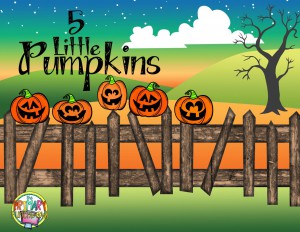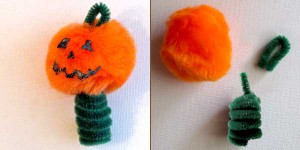Trust Us…Baby Shark is Helping your Child Learn!
In a world of apps, eBooks and streaming, it is hard to believe that something as simple as a few verses of “Baby Shark” could make much of a difference on your child’s brain. Although it may be driving some people crazy, it’s actually helping children learn! Research has shown, that simple songs and nursery rhymes can help your child learn language and literacy skills. Here’s how:
Repetition is Key!
Children benefit from repetition and review of concepts, and the right kind of children’s songs have the repetition necessary to really make developing language concepts stick. Through interactive finger play songs and chants, children can learn new words to grow their vocabulary and basic concepts, such as loud/quiet, up/down, in/out, as well as number concepts. They can also develop cognitive skills, such as memory, sequencing and attention by singing songs and chants that have many verses such as “The Ants Go Marching” and “Going on a Bear Hunt.”
Try these songs with little ones to encourage memory, sequencing, attention and language skills:
“Do You Know the Muffin Man?”
“Bringing Home a Baby Bumble Bee”
“Peanut Butter and Jelly Sandwich”
“Five Little Ducks”
“Round and Round the Garden”
“John Jacob Jingleheimer Schmidt”
Get them Moving!
Children learn best when they see it, hear it, say it and move it. Songs with movements and gestures are the perfect match for this learning style.
These songs all have hand and body movements to match the words!
“Baby Shark”
“Hurry Hurry, Drive the Fire Truck”
“Five Little Ducks”
“Icky Sticky Bubble Gum”
“Open Shut Them”
“Where is Thumbkin?”
It’s Rhyme Time!
Rhyming is an essential reading readiness skill. Songs and chants that rhyme help your children learn to play with and to explore the sounds of language. Even before they know the alphabet, rhyming can teach them the pre-literacy skills they will need to sound out words and to identify sound patterns in words. Research has shown that children who are taught nursery rhymes at an early age have better reading skills than those who were not exposed to them.
See if the children you care for can remember these rhymes!
“Down By the Bay”
“Willoughby Wallaby Woo”
“The Name Game Song”
“I Like to Eat Apples and Bananas”
“This Old Man”
“Hickory Dickory Dock”
Chants, nursery rhymes and simple songs with repetitive tunes and verses have been shown to help children to learn language, reading and important cognitive skills. From bedtime to bath time, and even while waiting in line at the store, integrating songs into your daily routine will help your child to develop a strong foundation upon which language and literacy skills can grow. So when you are singing your hundredth rendition of “Baby Shark,” remember the impact you are making in the brain of your child, because one day the sound of your child’s first word or listening to a story she has learned to read, will be music to your ears.
Fall Transition: Nutkin
For some classrooms, transitioning to the next activity can be hectic and disorganized! It’s great to have a routine or recurring activity to introduce a new part of the day. Nutkin is a great fall transition that will help children calm down and focus so they can hear Nutkin in his tree!
Words to Use:
Nuts
Squirrel
Gray, brown
Materials:
Potato chip canister
Brown and gray construction paper
Assorted nuts
Popsicle stick
Scissors markers
Tape
What to do:
- Cover the can with brown paper to resemble a tree trunk.
- Put a handful of nuts in the can.
- Draw and cut out a squirrel from the gray construction paper and tape it to the Popsicle stick (or print and cut out a squirrel)
- Place the squirrel puppet in the can with the nuts.
- As the children sit down for circle or story, take the can and say, “I wonder if Nutkin is at home. If you are quiet you may hear him rattling his nuts.” Shake the can.
- When the children are focused, quietly take out the squirrel and let it introduce a new activity or tell the children a story.
5 Little Pumpkins: Language Acquisition & Diversity Activities
Explore language boosting/culturally diverse activities at our upcoming workshop on language acquisition, understanding linguistics, and cultural diversity on Wednesday, 10/19 from 6:30pm-8:30pm! Fee: $25 Member, $30 Non-Member. Register online here or call 301-290-0040! In the meantime, check out these language building activities featuring the Five Little Pumpkins poem!
The poem Five Little Pumpkins has an array of language learning activities that can go along with it! But first, here are the lyrics for the poem:
Five little pumpkins sitting on a gate,
The 1st one said, “Oh my, it’s getting late.”
The 2nd one said, “There are witches in the air.”
The 3rd one said, “But we don’t care.”
The 4th one said, “Let’s run and run and run.”
The 5th one said, “I’m ready for some fun.”
Whewwwww went the wind & out went the lights,
And the five little pumpkins rolled out of sight.
Activity 1. Make a Mini-Book
There is a free printable mini book for Five Little Pumpkins here. They have two versions: color and black and white (which children can color themselves!). This is a great tool to get children involved with the poem. Ask them about the appearance of each pumpkin, have them count them, sort them in size, name them, and even give them a background or different culture! Reading and re-reading the words on the page will help children with word recognition.
Activity 2. Make a Visual
At Preschool Printables you will find some printable graphics (a gate and five pumpkins). They come in color or black and white. There are several different things you can do with these.
- Print on paper/card stock and laminate so they can be used over and over
- Print on felt to be used on a felt board
- Print several copies on paper so each child can have their own set to manipulate
- Use them with just one child, or with a group of children to work on counting, vocabulary (pumpkins, witches, numbers one through five, big/small, first/last, colors) following directions, answering “wh” questions, answering yes/no questions, etc.
Activity 3. Make Finger Puppets
Another fun activity is to make finger puppets to act out the story. There are a few different ways to do this. First, this is an ADORABLE craft by Craft Jr. dot com. They have several different Halloween finger puppets here…as well as other fun crafts. You can make 5 of them for the Five Little Pumpkins story!
Activity 4. Get Hands On
Get yourself five REAL pumpkins (of the small variety) and put them on your “gate” (real or fake). You can draw or paint faces on them, carve them, etc. Get pumpkins in different colors and sizes, and you can talk about the colors, the size (big/medium/small, biggest vs smallest, have the child put them in order from biggest to smallest) to review diversity. When you draw faces on, you can talk about shapes (i.e. triangles for eyes, circle for nose, crescent for mouth, rectangle for teeth, etc) Emphasize that each pumpkin is different on the outside but they are all the same on the inside!
There you have it! Four fun activities to go along with Five Little Pumpkins. Remember, while doing these activities with your child or student, be sure to use a variety of vocabulary when discussint the following:
- Talk about each step when making a mini book, or doing a craft (i.e. “First we are going to cut out the pages, then we are going to staple them together…”).
- Talk about attributes: colors, sizes, quantity…compare and contrast them (i.e. “This pumpkin is the BIGGEST”)
- Ask simple “wh” questions while you are doing the activities (i.e. How many? Which one is bigger? Which pumpkin is your favorite? What color is a pumpkin? What shape is the moon? What shape are that pumpkin’s eyes?)
- When you are done, review what you JUST did! See if your child can recall some of the steps.
Don’t forget to register for “Understanding Linguistic and Cultural Diversity and Language Acquisition” on Wednesday, 10/19 from 6:30pm-8:30pm! Fee: $25 Member, $30 Non-Member. Register online here or call 301-290-0040.
Pre-Cursive Practice Lines
Learning cursive is an important step in an elementary schooler’s academic career.
Studies have shown that students who are taught both script and print writing do better on reading tests, and that cursive writing uses a unique part of the brain.
Before diving head first into teaching kids to read and write in cursive, it’s a great idea to start practicing lines to get the feel for the hand motions and get used to keeping the pencil on the paper rather than picking it up for each new letter.
Click here for a PDF of Pre-Cursive Lines to practice with!
These would be great to use with dry-erase markers once laminated! That way they can be re-used each year!




